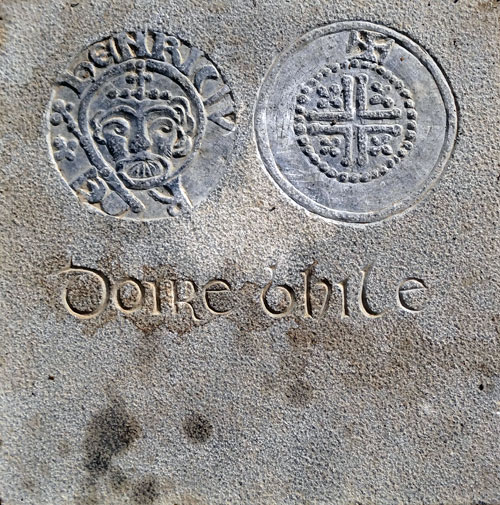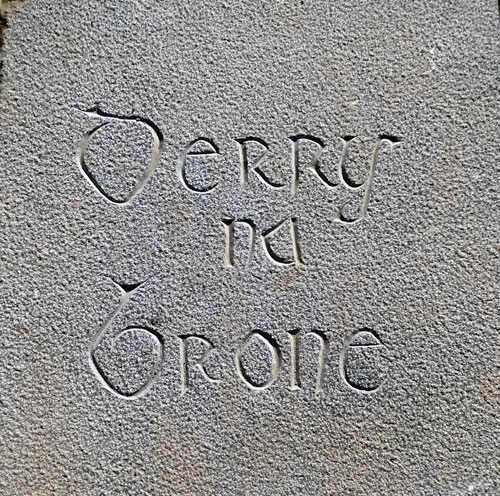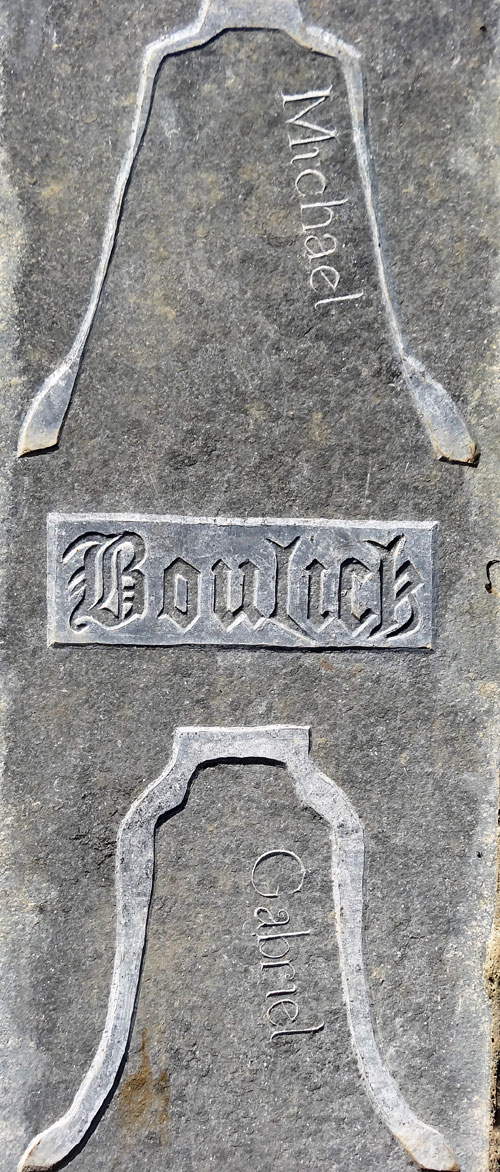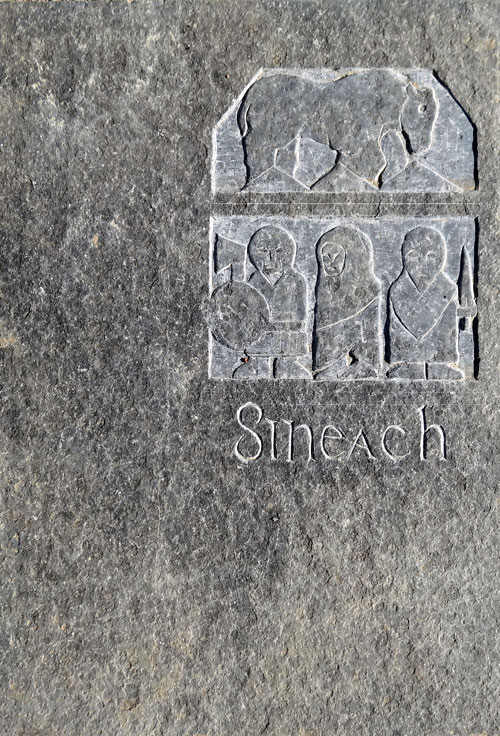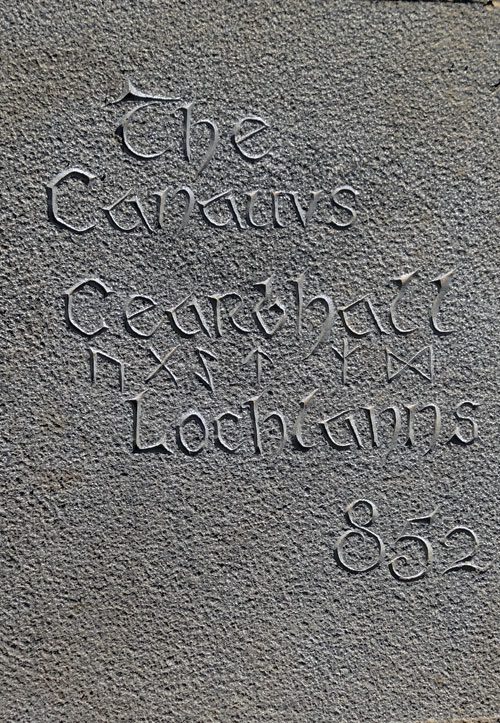Old-Ecclesiastical
Doire Bhile or Derryvella
A Monastery founded by St Tighearneach and was regarded as the second oldest churchyard in Ireland and one which the Pope is obliged to mention once a year. A King Henry II coin was discovered on this site and is now in the National Museum of Ireland. King Henry II was married to Eleanor of Aquitaine who gave the relic of the True Cross to the Monks at Holy Cross Abbey as a sign of her gratitude to the monks for giving her son a Christian burial after he had been set upon and murdered by thieves while collecting the Peter’s Pence. The image on this panel is of a King Henry II coin.
(Research/design: Liz and Philip Quinn)
“Derrynabrone”:
Derrynabrone translates as “Oak Wood of the Sorrows” and is the bog island next to Derrynaflan. It is known locally as Whort Island
(Research/design: Liz and Philip Quinn)
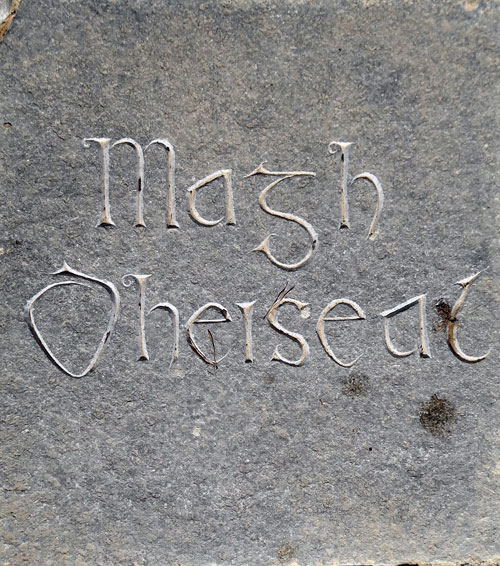
“Magh Dheiseal”
Magh Dheiseal or Modeshill translates as “Southern Plain of the River” – the King’s River. This is a pre-Norman church site and was granted to Kells Priory c1200.
(Research/design: Liz and Philip Quinn)
The Medieval parish of Boulick was bounded by Fennor, Ballingarry and Kilcooley parishes. The church dates from the late 15th Century. In the early 1600s many religious centres throughout the country were burned down and it was during this period that Boulick was attacked and destroyed.
In the late 19th Century two bronze bells were found under the tower of the church at Boulick while a grave was being dug. This was the family grave of the Lanigans of Pastorville, very close to Boulick. These bells were kept in the grounds of the Archbishop’s Palace – Dr Croke at the time – in Thurles until the early 1970’s when they were gifted to Holycross Abbey following its restoration. At this point the bells were dedicated to the Archangels Michael and Gabriel.
These bells are thought to be the oldest church bells in Ireland and it is believed that Michael is over 750 years old. It is believed that these bells once hung and rang in Kilcooley Abbey.
(Research/design: Liz and Philip Quinn)
St Sineach was the patron saint of Crohane.
Sineach was a holy nun and a sister of the illustrious St Senachus who became Abbot of Cluan-errard followng the death of St Finnian in 549 where he presided over 3,000 disciples, including St Kieran, St Columcille and St Columbanus.
Her ancient Church and Holy Well is now the site of the Church of Ireland at Crohane. St Sineach’s Feast Day is 5th. October and was celebrated with a Pattern Day up to 1810 when the local Parish priest banned it due to activities not in keeping with celebrating the sanctity of the holy Saint. The illustration on the panel was inspired by the legend whereby St Sineach had her only cow taken by Guaire, son of Colman King of Connaught. Sineach complained to Diarmuid, King of Ireland.
(Research/design: Liz and Philip Quinn)
The great Battle of Crohane
in 852. The men of Munster sent messengers to Cearbhall (son of Dunlaing) to bring Danes to defend them against the Lochlanns (Norsemen). In 872 Cearbhall became King of the Danes.
A history of Sir Kieran published 1992, about Clareen Parish, Co. Offaly, states that Cearbhall was buried in Sir Kieran’s churchyard in 885. There is a burial slab with a Celtic Cross marking his grave.
(research: Michael Hall, Kyle, Drangan.)

